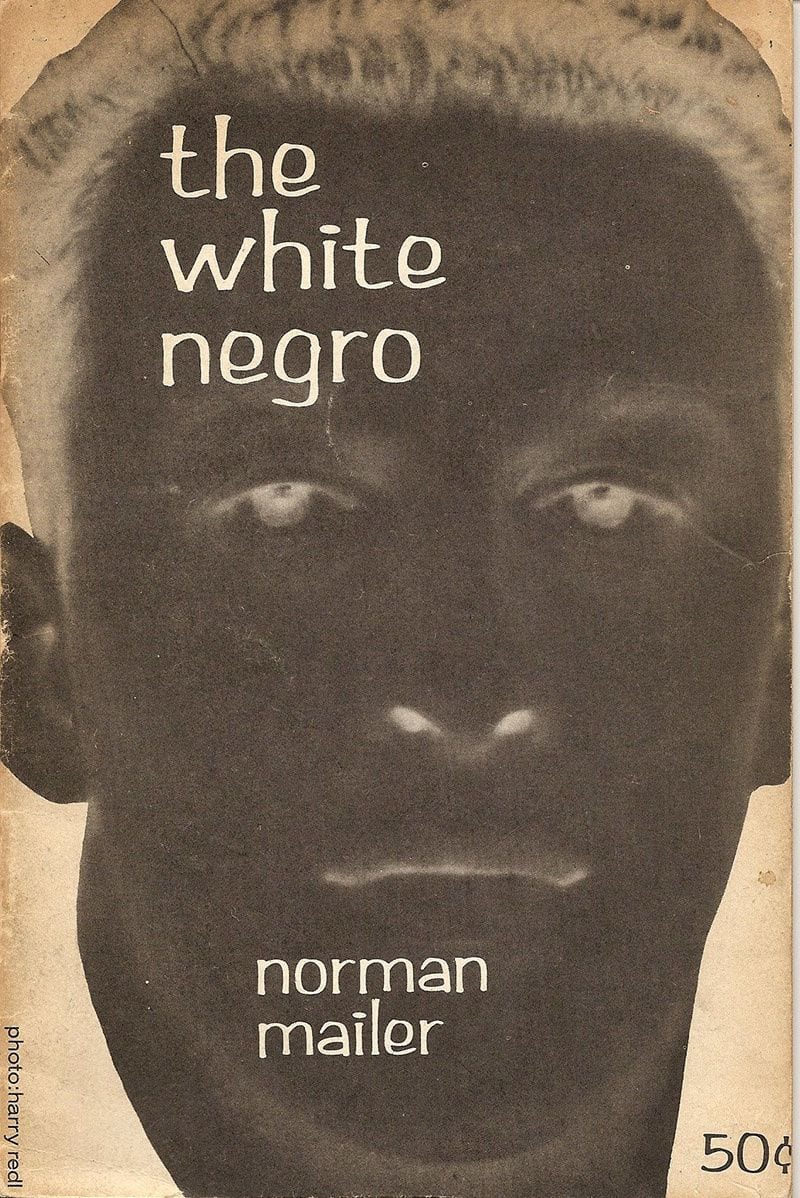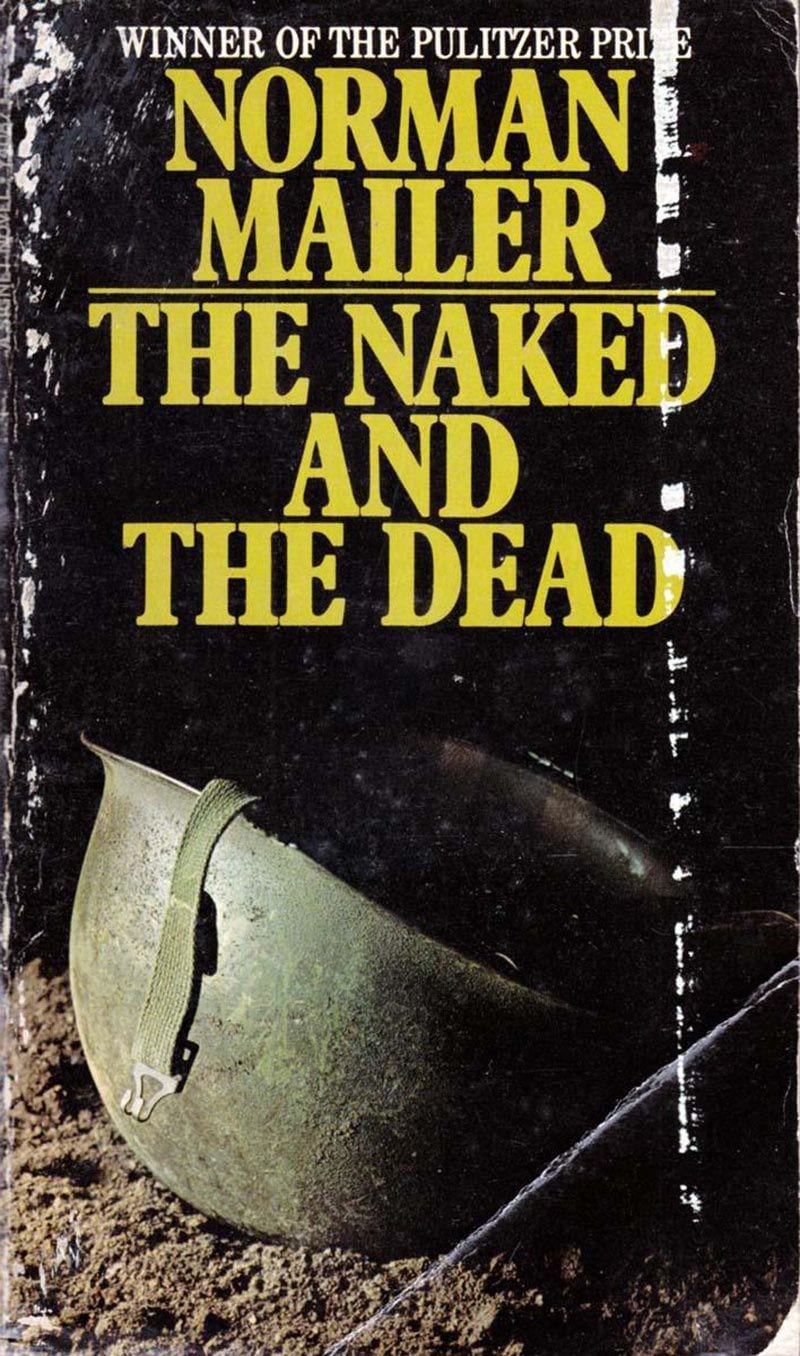
Sometimes it takes a while for heroes to fall, and when they do it can have disastrous effects. As literary icons go, few were better suited for the mantle of uncompromising brutes than Norman Mailer. He burst onto the writing scene in 1948, at the age of 25, with his debut The Naked and the Dead, a brutal World War II novel about a long patrol behind enemy lines. He was the It Guy of the decade, the uber-masculine writer destined to take on the mantle started by his predecessor, Ernest Hemingway. Mailer wrote sprawling novels in the manner of Theodore Dreiser. He simultaneously embraced and attacked American capitalism and the “dream” as it devolved in the ’60s. Mailer fell to the siren song of the literary murderer Jack Henry Abbott in the late ’70s, just as his own career was experiencing a startlingly vital renaissance. Anything and everything was grist for the mill of Mailer’s life and career, but he was more subdued in his final decades. He remained ambitious, brilliant, and audacious. It wouldn’t be too far off to say that his golden years were elevated by a sense of quiet grace.
With all this understood and essential to our understanding of Mailer’s entire career, approaching the unapologetic and at times vicious racism liberally sprinkled through much of The Armies of the Night and Miami and the Siege of Chicago (half of the Four Books of the 1960’s volume in this two-book boxed set) can be difficult to absorb as we tackle Mailer of the ’60s. At the dawn of the decade, as he was preparing to announce his candidacy for mayor of New York, he stabbed his second wife Adele with a penknife. Mailer pled guilty to third degree assault and was given probation and a suspended sentence of 17 days psychiatric observation in Bellevue. Apparently those were the only consequences for such actions in those days if you were rich, white, male, and could weave your way around verbal fisticuffs (on paper or with your voice).
His brutality did not prevent a prodigious output of writing, most of which is represented here. This second volume of the boxed set also includes the novels An American Dream and Why Are We in Vietnam? The first volume is comprised of essays that were originally included in the collections The Presidential Papers, Cannibals and Christians, and Existential Errands. At nearly 1,500 pages, the collection taken as a single entity is heady to absorb and perhaps even more difficult to embrace as testimony of a great writer in freefall. No matter the accolades this work received upon initial release (e.g., a Pulitzer Prize and National Book Award for The Armies of the Night) it can be hard to take in 2018, over a half century after the events in question (an account of the October 1967 March on the Pentagon.) Miami and the Siege of Chicago is an account of the US Political conventions of 1968, when the Chicago Seven and the Yippies clashed with the National Mobilization Committee to end the War in Vietnam.
Readers should understand that while the subtitle of Miami and the Siege of Chicago is An Informal History of the Republican and Democratic Conventions of 1968, the subtitle of Armies of the Night is a little more elusive: History as a Novel, The Novel as History. Mailer refers to himself in the third person, opines about his indecisiveness and floundering status and fears and hatred. Many have asked if we should be reading Mailer today, but perhaps the better questions are, How should we read Mailer? Why should we read Mailer? When should we read Mailer? Racism surfaces quite a few times in these books, and it’s hard to reconcile it.
Take this scene in Miami and the Siege of Chicago. It’s only been weeks since the murder of Martin Luther King, and the Reverend Ralph Abernathy (carrying on King’s Poor People’s Campaign) is late to a press conference. Mailer (again referring to himself in the third person) contemplates his relationship with the “other”:
“He was weary to the bone of listening to black cries of Black superiority on sex… beauty… war… the claims were all too often uttered by Negroes who were not very black themselves.”
“…that was why he was getting tired of hearing of Negro rights and Black Power-every Black riot was washing him loose with the rest…”
A few pages after this scene, Mailer congratulates himself for feeling like he’d bridged the gap between his antipathies towards the “other”. He’d been speaking to a crowd of anti-war protesters, applauding them for their perseverance. Suddenly he is approached by “…some young Negro from the Panthers or the Rangers… held his arm up with his own, Black and white arms together in the air, he had been given a blessing by this black…”
It’s this persistent fetishizing of the black body through his writing on boxing, or black history through contemplating struggles for liberation that get tiresome. Take this scene from “In the Red Light: A History of the Republican Convention 1964”. Mailer is watching writer James Baldwin on a call-in TV show:
“Baldwin had received a call from a liberal which went, ‘I’d like to help, and I’m asking you how.’ ‘Don’t ask me, baby,’ said Baldwin, ‘ask yourself.’ ‘You don’t understand,’ said the liberal … ‘…it’s getting confusing for me. I’m asking you in all sincerity where you think my help could be best offered.’ ‘Well, baby,’ said Baldwin, ‘that’s your problem.'”
Mailer goes on to recount the reaction of Baldwin and his fellow guest Diana Sands (also African-American) as they receive this question. Sand’s “…pinky extended in black lady disgust.” He is tempted to call the show and warn Baldwin that he should “ask yourself if your desire is if what you desire is for the white to kill every black so that there will be total remission of guilt in your white soul.” Later, in his essay “Looking for the Meat and Potatoes — Thoughts on Black Power”, Mailer does a good academic job of explicating the history of the movement, back to Garvey and Dubois, but he ends with a call for separatism. He imagines an audience with Richard Nixon, where he would tell the then President:
“…I would try to recognize that an area of the city where whites fear to go at night belongs by all existential-which is to say natural-law to the Blacks…”
The examples can be staggering in their unabashed, unadorned, unapologetic shamelessness to appeal to the base instincts of those who feel inclined to target the “other”. Early in The Armies of the Night, he opines about them as if they are specimens in the zoo:
“Not for little humor had Negroes developed that odd humorless crack in their personality which cracked each other into laughter…”
For Mailer, they are a mob, “…good-humored, then evil, then good humored again… singing songs, ‘We Shall Overcome”…genuine sorrow for happier days on the Left Plantation with the old Civil Rights Negroes, not these new Deep Purple Blacks…Was a mad genius buried in every Negro? How fantastic they were at their best-how dim at their worst.”
Just as he’s getting the reader comfortable while revealing a scene in Miami and the Siege of Chicago, Mailer ruins it with a description of a musical band (filled with African-Americans) at the Republican Convention:
“…ten Negroes in black pants… led by their master… a big black in a big black tuxedo… an old prince of a witch doctor… they were old and meek, naught but elderly Black Southern musicians, a veritable Ganges of Uncle Toms…”
What are we to make of all this within the context of these pages? How are we to assess the two full-length novels in this collection? 1965’s An American Dream was noisy and perhaps revolutionary at the time and now reads like an embarrassingly excessive American Psycho. Stephen Rojack is a war hero turned philosophy professor turned politician who stumbles from one troubling scene after another: murder, sloppy sex with a maid and a nightclub singer, and a cat and mouse chase with a cop. It’s a potboiler second-rate Mickey Spillane homage that speaks only to the likely product of a writer producing at a breakneck speed with no consideration of the consequences. Mailer’s eagerness to romanticize violent outsiders gets the best of him here and was perhaps better put to use in his experimental films. The other novel, 1967’s Why Are We in Vietnam? sets itself in Alaska during a father/son hunting trip. Gradually the son grows disillusioned with his father’s rather suspicious hunting tactics (like using a helicopter.) It’s a valiant effort and asks a lot of the reader, but the shelf life of this one feels as if it’s expired many years ago.
The Norman Mailer that we meet in this boxed set is not the author of that divisive 1957 essay, “The White Negro“. In that effort, Mailer expounded on the essence of Hip. Again, he was at the vortex of “the scene” at the time, an observer and participant who hobnobbed with the best and brightest. By the ’60s, with the ascent of Kennedy (whom he seemed to embrace if we look at the essay “Superman Comes to the Supermarket” and “An Evening with Jackie Kennedy, or, The Wild West of the East”), the ascendance of Lyndon Johnson to power, Mailer obviously grew disillusioned with liberal parties and movements. He called himself a “Left Conservative” and was slow to align himself with the war protesters in Mayor Daley’s Chicago.
The rage and racism is open for all to see after Mailer gets arrested and refers to a “…sly pale octaroon” with “hints of some sly jungle animal who would scavenge at the edge of the camp.” Journalism assignments from Esquire and speaking engagements paid the bills for Mailer, the child support and alimony and the growing sense (it seemed) that the novels he thought would push him to the top of the charts only ended up creating divisive audience reactions. The Naked and the Dead was Mailer’s singular number one hit, and the ’60s seemed to be the decade when he never stopped chasing that dragon.
There are a lot of powerful essays in this collection that serve as vintage Mailer. “Ten Thousand Words a Minute” is an Esquire classic from 1963 that covers the crucial two minutes and six seconds of the Sonny Liston/Floyd Patterson fight. Mailer calls fight manager Cus D’Amato “…one of the bravest men in America… He hated the Mob. He stood up to them.” Mailer sees himself as the pugilist here after his debate with William F. Buckley, Jr. Mailer covers the fight with writer Pete Hammill. Seated nearby is James Baldwin. After the battle, Mailer reflects:
“A man turns to boxing because he discovers it is the best experience of his life… Some men are geniuses when they are drunk; a good fighter feels a bit of a genius when he is having a good fight.”
Later, Mailer is combative in his reporter’s questions to fight winner Liston, who tells Mailer to get him a drink:
“‘I’m not your flunky,’ I said.
It was the first jab I’d slipped, it was the first punch I’d sent home. He loved me for it. The hint of a chuckle of corny old darky laughter, cottonfield giggles, peeped out a moment from his throat.”
Is everything Mailer writes racist? Well, there’s a fair share of sexism here, as even those barely familiar with Mailer’s canon might expect. It’s more ludicrous, though, as in the essay “Some Children of the Goddess”, where Mailer and his pal fellow writer Gore Vidal opine about the state of the novel in the era at the time:
“Finally, I laughed. ‘Gore, admit it. The novel is like the Great Bitch in one’s life. We think we’re rid of her, we go on to other women… and then we turn the corner on the street and there’s the Bitch smiling at us, and we’re trapped.”
Beneath the ridiculousness, which in this case is fairly forgivable, the examination of literature and its creators at the time is powerful. Mailer writes of William Styron, Philip Roth, Saul Bellow, and he has clear observations. It’s when he covers James Baldwin’s Another Country that he becomes offensive, again. It isn’t enough that he hates the book. He simply has to tear apart its foundation:
“All the sex is displaced, whites with blacks, men with men, women with homosexuals, the sex is funky to suffocation…”
Some of the literary sketches in this collection are powerful. In “A Television Show with Nelson Algren”, Mailer clearly admires the author as they share guest duties on a TV talk show. Mailer effectively eviscerates books by Mary McCarthy (though he personalizes it) and Lyndon Johnson. Mailer would go on to write more effective pieces about boxing (the book length The Fight in 1975 about the Ali/Foreman fight in 1974), and a truly beautiful book about writing (The Spooky Art, 2003), both of which benefit from discipline and temperance. The essays contained in this collection, like most of Mailer during this decade, are best when longer, reflective, and focused. The open letters and diatribes and other occasionals may exhaust the most patient reader. These works were indicative of the decade and perfect barometers as to where and how the wind was blowing.
In the end, when we sweep away the flourishes and indulgences, the conceit of History as a Novel and the Novel as History, we can handle some of Mailer’s literary transgressions. We are experienced. We understand Mailer of the ’70s, the ’80s, and through to 2007 and his final novel, The Castle and the Forest, published shortly before his death. Remove the racist bile sprinkled through Norman Mailer: The Sixties like flavored seasoning that we hope doesn’t flavor the entire decade of his work and we would be left with a sanitized version of his work. Keep the racism in, accept the hateful observations written with a seemingly gleeful flourish, and this collection will provide finality to the reader’s obligation.
Embrace the literary renegade’s claim that his work was essential to his time because you know he literally walked the streets and planted himself in the moments when and where the battles took place. Keep Norman Mailer: The Sixties with the racism in place and do so at your own risk.



